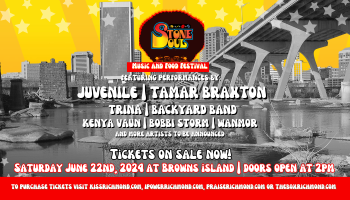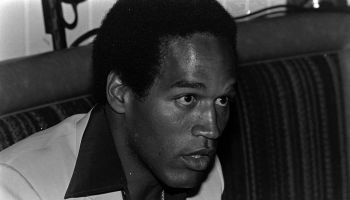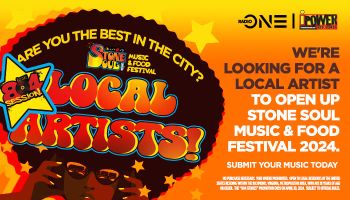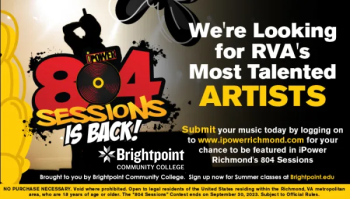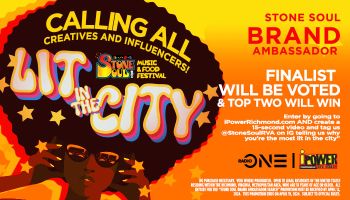“It’s important to remember that Fred and Lee actually went to Rome in 1979 and showed canvases of their work. And this is two years before Basquiat started to do similar things.” – Charlie Ahearn, Director of “Wild Style”
In 1983, a few folks got together for a film based around the story of a young artist named “Lee” George Quinones and his life between the emerging street art known as Graffiti and his opportunities for mainstream acceptance.
The movie was was chock-full of adventures in the underground Graff scene as well as the music that was only being played in clubs in NYC via soon-to-be-legends like Grandmaster Flash, Cool Herc & Busy Bee to name a few. Now thirty years later, the movie stands as a benchmark for the first signs of an emerging culture that would become the global phenomenon known as Hip-Hop.
TUD sat with producer/director Charlie Ahearn for his thoughts on the neophyte culture that he helped introduce to the world.
TUD: Three decades later, how do you feel about the impact of ’Wild Style?
CA: Well I think the simplest way to look at it is a kind of touchstone for where Hip-Hop came from and the reality of what it was like at a time when Hip-Hop was really as a concept and an ideal just emerging. Even the word “Hip-Hop” wasn’t used that much at that time. And certainly the idea that Hip-Hop was a culture that integrated all these different forms together was not something that was thought of or agreed to. I think that the movie in a really simple way provided people with a document of what it looked like and felt like even though the film is NOT a documentary. It was more like, “Hey guys, let’s get together and make a musical.”
Really? The concept of “Wild Style” started out as a musical?
That’s what it’s like. People were like “what do you want to do?” It evolved in conversation with a number of artists. Obviously Fred (Fab 5 Freddy) and I were collaborating from the get-go. Fred had a kind of idea of Hip-Hop as a culture, which really was not something that was talked about very much. It had to do with the idea of what we called Graffiti and the music that was being played were a part of an idea, a kind of new youth culture. And so, through these collaborations with artists like Grandmaster Kaz, Flash, Theodore, there’s a kind of crystallization of the form of how everyone wanted to see Hip-Hop. You know, like the Amphitheater we didn’t document that, we made that happen. It was a kind of projection. Lee worked on the Amphitheater and made theses changes independent of me as a director, which evolved into this thing of a star on stage. And I like to look at it now like: ok, that’s the nation of Hip-Hop. We’re representing a nation of people that really went international at that moment.
Did the music grow as fast as the art did?
Of course, you have Bambaataa and the evolution of the Zulu nation and how he was looking at “Planet Rock” and had his own vision of an international culture, which embraced all sorts of artists and forms. He would play James Brown next to the Rolling Stones and he thought it was all one thing. He invited Puerto Rican youth to come where it was primarily a black neighborhood. Without knowing the background of this, you wouldn’t understand why this was revolutionary at the time. The vision that people in Germany or Japan might embrace this culture in, which is what happened when the movie went out and people identified aspects of the culture that they could embrace and add on to, created this international thing, which we call Hip-Hop.
With your movie being a collaboration between art and music, what’s your opinion of Jay Z’s attempt to bring those two worlds together again with his latest album?
Jay Z talks about a Picasso but that’s just a reference point to the idea that our culture respects individual artists that were seen as originators and the ideas that these youths that were painting trains evolved the art forms as individuals and en masse. I would have to start with Lee as the ultimate example of someone who’s now done close to 40 years as an artist. By the mid-seventies he was knocking out a train car a day. And by the time I met him I considered him the most interesting artist in NYC even though he was still a teenager. It’s important to remember that Fred and Lee actually went to Rome in 1979 and showed canvases of their work. And this is two years before Basquiat started to do similar things.
What was your interaction like with Basquiat back then?
Well of course he was very much… during the whole time we we’re working on “Wild Style,” Basquiat was like a comet, an incredibly creative individual. From the first time I met Fred at the Times Square show, Basquiat was also at the Times Square show and made an impact in June of 1980. So yes, he was very much a part of the world along with a whole host of other artist whose names you might not recognize but who are important. I was primarily focused on Lee but these people were very much on my mind and part of this world. I just thought that it would be a different movie and a different story if I were to try to include all these people in the same vision.
Right, that would be more like a documentary.
I wanted a simple story that could act as a vehicle through which people could experience the art and music as directly as possible. So I really let Lee act as the iconic Graff writer. His internal conflict, which is that he was driven to fame but that he could not reveal himself because he was afraid of being arrested, was true of dozens. And that’s the most iconic statement you could make. That’s true right to Banksey today and it was true of Lee more than anyone. He could stand in for the whole movement. And that evolution of being someone on the trains but having the conflict of, is he going to become a public artist? Or is he going to sell canvases to an art collector? These are questions that the whole movement has gone through.
As far as the cast, where are they now?
Lady Pink, when she was in the movie and I first met her she was 16. Not even that well known in Graffiti world, much less in the outside world. But she’s the single most well known, respected writer/artist in the world and remains active. Lee is the same way, but talking about Wild Style, we’d have to go into a really long story about what happened to the artist from the Bronx. People ended up in prison, on crack and the dead. There was a lot of tragedy that happened in the community and people involved with “Wild Style” were touched. We have lost a lot of great artists like Dondy and Frosty Freeze, the big afro’d guy who’s on the cover in a lot of the posters and was part of Rock Steady crew. But there are people who are still very much here today like The Chief Rocker Busy B, Grandmaster Kaz, Grandmaster Flash, The Cold Crush Brothers, Grand Wizard Theodore, these people have I would say, very active careers, they’re not Jay Z. And they weren’t Jay Z then. A lot of people never really got the commercial treatment and that level of fame.
Last question, did you consider yourself a Hip-Hop head? And if so, are you still one?
I don’t think I’ve ever stopped being a Hip-Hop head. But Hip-Hop is a very large animal, are you talking about the tail, the snout or the claws? There are a lot of pieces to it. One could never hope to stay up on top of what you would call street art for instance. It’s a global phenomenon. I tried it, I’m very interested in new artists, I work with a lot of new artist and of course have been very involved with the old school. We just did an enormous “Wild Style” reunion at the original amphitheater, 2,500 people showed up and everybody from the movie was there. Fab Five Freddy, Lee, Lady Pink, Busy B, Grand Wizard Theodore, the Cold Crush Brothers. They were all there performing. It was a fantastic party. No V.I.P. section, this was one big family. It wasn’t like, “ok the cool people are over here and you have to have a pass or be on a list.” We had all these people, like Bambaataa was there just sitting in the audience like everybody else. I’d exhaust myself trying to list everyone who came but I was very happy with what happened. It was one of the most exciting things I’ve ever experienced.
So you’re still a Hip-Hop head?
(Laughs) I guess so. I mean, I wouldn’t want to have to take a test.
Read more original interviews on TheUrbanDaily.com:
Like TheUrbanDaily.com on Facebook to stay updated with the latest entertainment news and original interviews!
“Wild Style” The Musical? Director Charlie Ahearn Reflects 30 Years Later was originally published on theurbandaily.com








